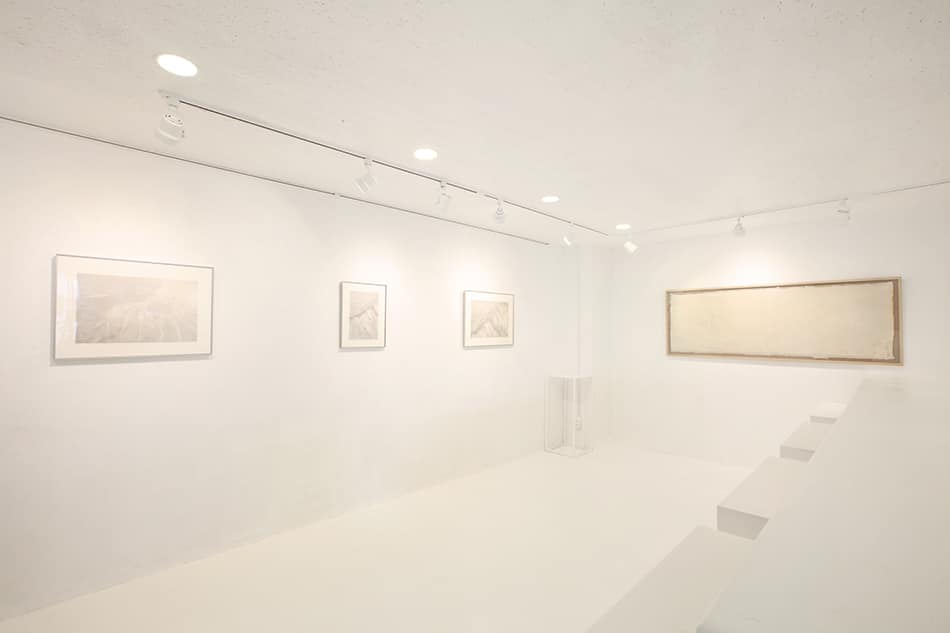Season Lao exhibition 2022
2022年2月12日(土) - 3月6日(日)

虚室生白
ラオ氏の作品は東洋的イデア論である「天人合一」思想に基づいた「余白」による美的概念を表現している。
余白の美は、東洋における美意識の最たる特徴の一つである。霧や雪、または虚空などで表現されることが多い「余白」という空間は、時に描かれているモティーフを超えた事物を鑑賞者に予感させる。この余白の美からは単純な風景とは違う、非常な深みと安らぎが感じられる。これは、鑑賞者がその「余白」に対して何らかの解釈を試みる際、補足として自己の体験や心的世界を投げ入れることで、作品世界と反省的に一体となるからではないだろうか。
また「余白」がもたらす空気感は、主観主義的判断に定位した美ではなく、常に鑑賞者側に開かれた美となり、観る者を許容し、鑑賞する私たちを桃源郷(理想郷)に招き入れる。
例えば幸田露伴の著書に「観画談」というものがある。作中の主人公はこのプロセスにより画中の人物に呼ばれる体験から、あちら側と一体となる様が描かれている。このような 神仙的世界観はまさしく「天人合一」に基づくものである。芸術においては、対象化された作品と観者との関係は、観者を軸とする美学ではない。あくまでも観者が作品世界と融和する美学として、古来より道教芸術で構想されてきたことが解される。

Season Lao’s work strives to express the aesthetic concept of “blank white space” based on the concept of “the unification of man with the nature” that could be described as central to Eastern philosophy. The beauty of blank white space is one of the most important aspects of aesthetic awareness in Eastern thought. These blank white spaces, often depicted using fog, snow, or simple emptiness, provide the onlooker with a feeling that there is something that extends far beyond the motifs that are frequently depicted. From the beauty of these empty spaces, one can gain a great sense of depth and comfort different from that conveyed by simple landscape art. Perhaps because the person viewing the art always tries to interpret these blank white spaces in some way, filling in the void with personal experiences and his or her own internal world, such are offers opportunities to become one with the artwork through personal involvement.
In addition, the impression of open air conveyed by the empty spaces is not a localized beauty based in subjective judgment, but rather a beauty always available and open to the viewer, inviting the person viewing the artwork to appreciate its hidden paradise (utopia).
One example is Kouda Rohan’s “Kangadan.” The book describes the protagonist’s experience of being called by a character in a painting and becoming one with the painting. This kind of mystical worldview is based on “the unification of man with the nature.” In art, this is not an aesthetic revolving around the one to one relationship between the work in question and the viewer, but rather an aesthetic of the spectator becoming one with the world of the artwork, and it is understood to have been conceived by the ancient Taoists.
